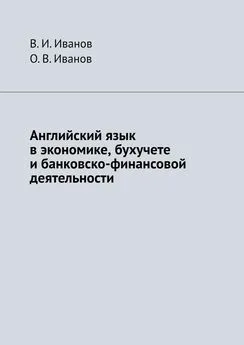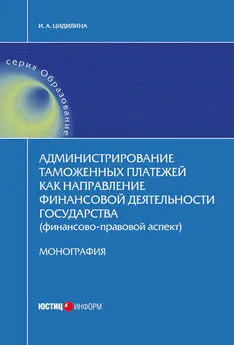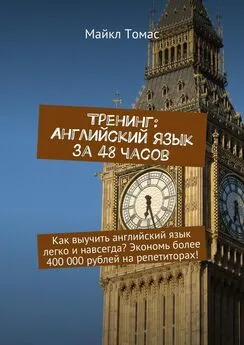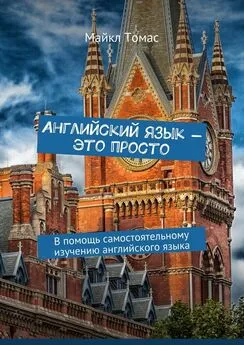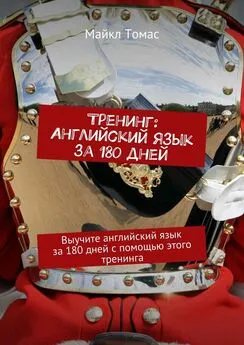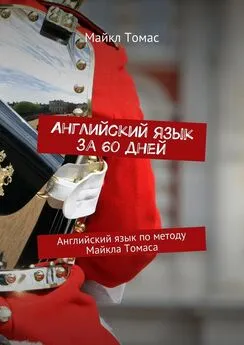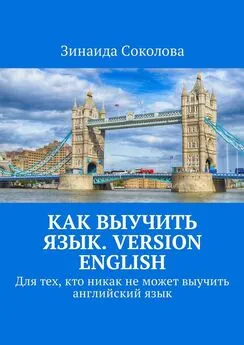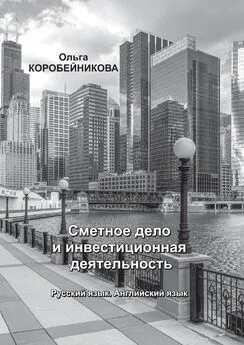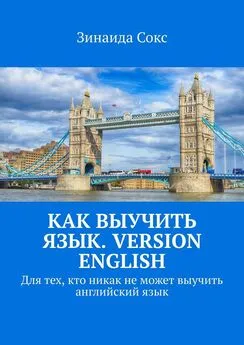В. И. Иванов - Английский язык в экономике, бухучете и банковско-финансовой деятельности
- Название:Английский язык в экономике, бухучете и банковско-финансовой деятельности
- Автор:
- Жанр:
- Издательство:неизвестно
- Год:неизвестен
- ISBN:9785449396549
- Рейтинг:
- Избранное:Добавить в избранное
-
Отзывы:
-
Ваша оценка:
В. И. Иванов - Английский язык в экономике, бухучете и банковско-финансовой деятельности краткое содержание
Английский язык в экономике, бухучете и банковско-финансовой деятельности - читать онлайн бесплатно ознакомительный отрывок
Интервал:
Закладка:
Английский язык в экономике, бухучете и банковско-финансовой деятельности
В. И. Иванов
О. В. Иванов
© В. И. Иванов, 2018
© О. В. Иванов, 2018
ISBN 978-5-4493-9654-9
Создано в интеллектуальной издательской системе Ridero
От авторов
Данная работа представляет собой сборник текстов на английском языке, которые объединяет одна область знаний – экономика. Вошедшие в него материалы взяты в том числе из оригинальных англоязычных открытых интернет-источников, и их тематика связана с различными аспектами экономики США.
Для удобства тексты сгруппированы по следующим разделам: макроэкономика, бухгалтерский учет, инвестиции и банковское дело, коммерческие контракты. Это позволяет пользователям выбирать интересующую их тематику текстов.
Предлагаемый сборник текстов может служить пособием по совершенствованию английского языка. Для этой цели после некоторых текстов следуют авторские упражнения на закрепление предлагаемых материалов, а также перечень полезных слов и выражений, которые можно использовать в своей повседневной деятельности. Включенные в пособие упражнения, иллюстрации и глоссарии предназначены для лучшего понимания прочитанного, закрепления лексического материала и терминологии, а также для расширения словарного запаса учащихся с целью практического применения полученных знаний на практике.
Пособие предназначено для различных категорий лиц, изучающих английский язык, в том числе для студентов экономических ВУЗов всех специальностей, для студентов лингвистических ВУЗов, в частности переводческих факультетов, для специалистов-экономистов, а также для всех лиц, желающих совершенствовать свои знания английского языка в области экономики, особенно, если планируется применение этих знаний в работе за рубежом или в сотрудничестве с иностранными компаниями.
Отдельно хотелось бы выделить раздел B: Accounting, где часть текстов простым и доступным для любого читателя языком объясняют основные цели, понятия и инструменты бухучета, которые на первом этапе чрезвычайно сложны и непонятны людям, не связанным с практикой бухучёта или только начинающим его изучать.
В раздел D: Sales Contracts включены в том числе образцы действующих или исполненных контрактов белорусских предприятий со всеми приложениями. Почти всегда их перевод на английский язык выполняли сами белорусские предприятия. К сожалению, качество этих переводов оставляет желать лучшего. В данный сборник они включены в качестве примерного контракта. Желающие могут попытаться их откорректировать и использовать как шаблон применительно к специфике своих предприятий и организаций.
Составители данного сборника являются авторами только предложенных в разделе A: Macroeconomics упражнений. Авторы/источники текстов указаны в начале/конце текстов, в списке использованной литературы, а также в гиперссылках.
A: Macroeconomics
Text 1. International commerce: From the Civil War to the Present
In 1866 America was a net importer of merchandise, as it had been in most years before the Civil War. During the war, tariffs had risen, and the depreciation of the dollar had offered an added barrier to imports. On the other hand, America’s major export, raw cotton, had fallen off dramatically.
The tariffs imposed during the Civil War were retained, and throughout the late nineteenth and into the twentieth century (to 1913), the pattern was one of still higher duties. Behind a tariff wall, American industry flourished. Goods formerly imported were now made in America, and imports changed from manufactured goods to the raw materials needed to make them (such imports typically came in duty-free). Tariffs notwithstanding, total imports rose as the American population grew and demand increased.
In the aftermath of the Civil War, raw cotton resumed its traditional role as America’s largest export good (from 1803 to 1937, the Civil War and two other years excluded, unmanufactured cotton was America’s largest merchandise export). The country was also an important exporter of grain and mineral products. Yet, what most characterized the growth of American exports in the late nineteenth and early twentieth centuries was the rise of manufactured goods exports: refined petroleum, machinery, and other manufactured goods. Some exports were goods that had previously been imported, but usually they were mass-produced products made by methods not yet used abroad (such products included sewing machines, harvesters, and then, automobiles). Exports increased rapidly as American goods became highly competitive in world markets.
Indeed, as imports rose, exports rose even faster with the consequence that (at first sporadically and then consistently after 1889) exports always exceeded imports until 1971. When the balance of trade remained consistently positive, Americans gradually recognized that a high tariff policy was no longer necessary or even desirable. In 1913, with traditionally low-tariff Democrats in control of Congress, the Underwood Tariff lowered duties substantially. International commerce expanded faster in the late nineteenth and early twentieth centuries than did worldwide output, the gold standard aiding in the growth.
American exports soared in the aftermath of World War I, as Europe depended on the United States for aid in recovery. In 1919 U.S. exports reached a level that would not be exceeded until 1943. There was another change of importance. Most U.S. trade had been financed before the war with sterling acceptances (credits denominated in pounds sterling). During World War I, dollar acceptances came into use. This meant Americans were financing their own trade. A third change was that with Republicans in power in the 1920s, the notion of reduced protectionism floundered (in 1922, the Fordney-McCumber Tariff raised duties, especially to protect new «infant» industries such as chemicals). When, after the 1929 crash, Congress was trying to deal with the downturn, it was easy to blame imports, and the 1930 Smoot-Hawley Tariff was exceptionally high.
In the 1920s, country after country that had abandoned the gold standard during World War I had sought to restore it, but the restoration proved temporary. In 1929–1933 world output declined; countries devalued their currencies to encourage exports, yet world trade plummeted. The 1930 Smoot-Hawley Tariff provoked retaliation: it reduced American imports, but owing to new foreign duties on U.S. products, American exports fell faster. In the 1930s, new barriers to U.S. exports proliferated – not only foreign tariffs but exchange controls, quotas, and a whole range of other impediments to trade. Currencies fluctuated against one another, creating unpredictable conditions. In 1933 the United States devalued the dollar and in 1934 attempted to spur exports with reciprocal trade legislation. But by then the world economy was in such disarray that these efforts did little good. In the second half of 1940 the United States, in response to Japanese militarism, started to restrict U.S. exports to Japan and in August 1941 sharply curtailed the flow of crude oil and gasoline to that country. Many believe that these trade sanctions provoked the Japanese attack on Pearl Harbor.
World War II requirements revived international trade and, specifically, American exports. In the aftermath of that war, America emerged as the world’s economic leader, dedicated to developing a world of greater and freer trade. Its exports exceeded imports, because its goods were highly competitive in world markets. America was strong and physically unimpaired by the war; other industrial countries were in ruins. The United States was committed to lead and to shape a postwar world where trade could serve as a generator of economic growth. The United States was active in the formation of the International Monetary Fund, designed to provide a basis for the return to stable currency rates and to facilitate international payments; international trade could not resume if there were not adequate payment mechanisms. Likewise, the United States participated in the General Agreement on Tariffs and Trade (gatt), to assist countries in eliminating the then ubiquitous obstructions to international commerce. The Marshall Plan assisted both European recovery and American exports to Europe.
In 1962 Congress passed a major trade law, and the United States sharply lowered its tariffs. The United States as the world’s leader believed that it had little to fear from imports and everything to gain from demonstrating its dedication to freer trade. The nation continued to participate in gatt, and the Kennedy round of trade negotiations (completed in 1967) was particularly successful in encouraging worldwide tariff reductions.
Yet as trade barriers fell in the 1960s, America began to experience balance of payments deficits; goods exports still exceeded goods imports (the trade balance), but the net exports did not offset U.S. foreign aid, military expenditures abroad, and large foreign investments. In 1971, when it appeared that America would have its first twentieth-century trade deficit, President Nixon devalued the dollar. After 1973, worldwide currencies floated. Consistently, American imports began to exceed exports, and the country was now importing a wide range of manufactured products. For the first time in its history, on a mass market basis, Americans were buying foreign cars, foreign hi-fi sets, and foreign steel. And the nation’s dependence on high-cost oil imports made the trade deficit even worse. By the 1980s there were few product categories where American exports exceeded imports (these exports included wheat, chemicals, aircraft, and parts).
Читать дальшеИнтервал:
Закладка:
